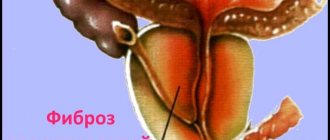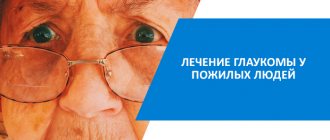- How addiction is formed in stages
- Social
- Problematic
- Critical
- Chronic
- Treatment for cocaine addiction
- On one's own
- In a drug treatment hospital Detoxification and relief of withdrawal symptoms
- Coding
- Rehabilitation and resocialization
Attention! Drug use causes irreparable harm to health and poses a danger to life!
Cocaine addiction does not develop immediately, and many people start using the drug thinking that they can always stop. Then it becomes a habit, an addiction arises on the physical and mental level. It is best to begin eliminating the problem in the early stages of using a psychotropic; this will help you quickly return to normal life and prevent mental and somatic complications.
What are the dangers of cocaine addiction?
The narcotic drug cocaine is almost instantly addictive - after 3-4 doses of this substance, dependence is formed. However, a particular danger lies in persistent psychological addiction, which there is no way to eliminate without the help of experienced narcologists. Therefore, the main way to treat cocaine addiction is a psychotherapy program in St. Petersburg. Unfortunately, there is no other path that could lead to the roots of the disease.
Why is cocaine addiction so dangerous?
There is no point in denying the harm of cocaine; even drug addicts understand this. What pushes a drug addict to search for the next dose, at the cost of much destruction in his own life, while being fully aware of this? This is a strong psychological dependence on cocaine, which forms after just a few doses .
However, the physical dependence on cocaine is quite weak, but the mental dependence has such a strength that cannot be compared with other drugs. Like other drugs, cocaine has withdrawal symptoms. It consists of severe headaches and other manifestations associated with the human body. However, it is the psyche that is subject to the strongest influence, and it can be recognized by its symptoms:
- Periods of severe depression.
- Extreme lack of strength, lethargy and excessive sleepiness.
- Excessive feeling of hunger.
- Attacks of psychosis and neurosis, delusional states, the appearance of hallucinations that can result in suicide.
- Obsession with thoughts about cocaine and the search for the next dose.
With active cocaine addiction, a person needs increasingly larger dosages of a substance, the purity of which in our country is extremely questionable, and this affects the impossibility of correctly calculating the dose. All this can lead to a cocaine overdose, which has the following symptoms:
- Convulsive seizures that are similar to epileptic seizures, but are not responsive to conventional epilepsy medications.
- Serious disturbances in the functioning of the heart muscle.
- Loss of consciousness, fainting.
- Difficulty breathing up to paralysis.
If you notice even the slightest such manifestations, then you should immediately sound the alarm and turn to professionals for help. The modern drug treatment center in St. Petersburg “StopNarco” has many years of experience in working with people addicted to cocaine, which helps to use effective and proven treatment technologies. A large number of our patients have successfully overcome cocaine addiction and now live full, happy lives.
How to get rid of cocaine addiction
It is very important to form stable motivation for the course of treatment. If the patient does not agree to undergo drug rehabilitation, there is a high probability of relapse. Forcible placement of a patient in a hospital in our country is prohibited by law.
After the detoxification stage, the narcologist finds reasons to convince the patient to complete the entire course. Voluntary isolation, lack of the Internet, mobile phone and communication with relatives help to completely immerse yourself in your inner world. The patient's mechanisms of revaluation of values and search for his “I” are triggered.
Consequences of cocaine and characteristics of use.
When the effect of cocaine on the human body ends, the mood of the drug addict changes greatly, not for the better . Instead of experiencing a euphoric state, there come periods of depression and anger. The addict has no way to cope with this condition on his own , so he finds only one way out - another dose of cocaine. With the development of cocaine addiction, mental deviations manifest themselves so strongly that all the mental processes of the addict are occupied with only one task - to find a new dose of the drug.
Experiences with all types of addiction indicate that cocaine addiction develops very rapidly, in many cases faster than heroin and other drugs. Once you use cocaine, you can become addicted to it for the rest of your life.
The peculiarity of cocaine addiction is psychological in nature. The physical manifestations of addiction are not as strong. But at the same time, cocaine still affects the body and can lead to the progression of many serious diseases.
Consequences
Cocaine use causes irreversible harm to the body. Under the influence of this drug:
- The vessels narrow and contract strongly.
- Body temperature rises, breathing becomes too fast.
- When using a large amount of the drug, systemic damage to the nervous system develops, which leads to disruption of the heart, depression of respiratory functions, and in the long term can lead to death.
- The brain is damaged, especially the structures responsible for controlling emotions and motivation. A person becomes susceptible to epileptic seizures.
- Due to cocaine use, the patient loses his appetite, which can lead to exhaustion.
- With chronic use, psychosis, paranoia, and persecution mania develop.
- Inhaling a prohibited substance damages the mucous membranes, which leads to the development of inflammatory processes in the nasal mucosa.
Signs of cocaine addiction.
Cocaine intoxication is quite dramatic in nature, so it is possible to recognize its fact without special tests. The main signs of cocaine use are :
- Senses become heightened , and many things may seem brighter and clearer, and the cocaine addict himself experiences some sense of flight.
- Shifting the drug addict's attention from external stimuli to his own feelings . Since the perception of the world and oneself is highly heightened, the addict feels the touch of his skin with great pleasure.
- Accelerated reaction , body movements are sharper and have greater speed. A person addicted to cocaine is in some illusion that he performs his own actions in a familiar rhythm, and those around him behave slowly.
- The drug addict's thinking abilities and ability to reason sensibly are reduced to a particularly low degree, however, he himself denies this and is unable to recognize it.
- Extremely increased sexual desires.
- High psycho-emotional mood , a cocaine addict is in an optimistic, elevated mood and does not remember life’s difficulties.
- Cocaine intoxication can also be easily identified by several physical manifestations. A person who has taken a dose of cocaine experiences a rapid increase in pulse rate and high blood pressure, and enlarged pupils that do not respond to light.
All of the above signs indicate the presence of cocaine addiction. Do not try to treat it yourself, since addiction is a disease, and like any other disease it requires a professional approach to treatment. Independent attempts to cure a cocaine addict can lead to irreversible consequences, which can also provoke severe psychiatric illnesses or even death. Therefore, at the first symptoms of cocaine use, you need to seek drug treatment help at the StopNarco drug rehabilitation center in St. Petersburg.
Signs of cocaine addiction
Cocaine acts on receptors in the nervous system, increasing physical endurance and elevating mood. An addicted person has a reduced need for regular meals and adequate sleep. He remains in an alert state until the moment when the psychoactive substance is in the blood at maximum concentration. Cocaine addiction develops with prolonged use of the powder. Over time, the drug provokes a strong physical and psychological craving for a new dose. Somatic disorders and secondary mental disorders (comorbid disorders) are observed.
Treatment of cocaine addiction in St. Petersburg.
In order to accurately diagnose cocaine addiction, external observation alone is usually not enough. Therefore, to recognize cocaine addiction, the StopNarco clique in St. Petersburg uses certain special blood and urine tests. Also, each admitted patient undergoes a detailed diagnosis to identify all the details of their health status and the course of drug addiction.
In order to effectively cure cocaine addiction, the client’s independent desire is necessary. Therapy against his will in most cases will not lead to the desired results, and can also provoke conflicts and crimes. However, in this case, our specialists conduct consultations with the drug addict, through which he develops the necessary motivation for full treatment.
Cocaine addiction is a very complex disease, so therapy for it requires great efforts by the patient himself and the professionals conducting it.
Stages of treatment for cocaine:
- Primary diagnostics and consultations . Upon admission, each patient undergoes an examination and examination, based on the results of which the most effective treatment plan for him is selected.
- Detoxification of the body from harmful substances . It is carried out by installing an intravenous drip with a specialized medicinal composition. Such measures make it possible to remove drug residues and toxic poisons from the patient’s blood, and at the same time greatly improve his well-being. These procedures are also aimed at restoring the patient’s psycho-emotional background.
- Psychotherapy sessions . During rehabilitation, qualified psychologists and psychotherapists work with the patient, who, through group and personal sessions, work to eliminate mental cravings for cocaine. Also during this time, the patient is taught to work with his condition - to fight depression, cope with stress.
Is it possible to get rid of cocaine addiction?
It is possible to eliminate mental and physical cravings for a psychostimulant. At the first stage, the patient needs a psychiatrist-narcologist who will conduct a diagnosis and relieve withdrawal symptoms. Remission can be achieved if you approach treatment comprehensively. The therapeutic process involves psychiatrists and psychotherapists, addictionologists and chemical dependency specialists, who conduct individual and group sessions with patients. Awareness of the reasons that became the incentive to use drugs is the first step on the path to recovery.
Rehabilitation after using cocaine in.
After the addict goes through the stages of treatment described above, he needs to undergo a full course of rehabilitation measures that will return him to normal life. This process of recovery from cocaine addiction is extremely complex and painstaking, so our professional staff at the StopNarco clinic in St. Petersburg has no right to miss even the slightest detail . Cocaine rehabilitation uses a comprehensive program that includes elements of the 12-step program, proprietary technologies for working with drug addicts, and effective innovative treatment methods.
Remember that there is no way to quickly cope with cocaine addiction, much less overcome it on your own. Attempts to independently influence a cocaine addict often lead to nervous breakdowns, psychiatric diagnoses and inevitably harm their health. Therefore, as soon as you see signs of addiction to cocaine, you must immediately seek help from experienced narcologists, addiction specialists, psychologists and rehabilitation specialists.
The drug treatment clinic “StopNarko” in St. Petersburg has all the necessary certificates, diplomas and permits to carry out any activity in the field of modern drug treatment. Our institution has also accumulated vast experience in the fight against all types of addictions and in any form.
Cocaine addiction, like any other disease, is best treated in its early stages, so don’t wait until it becomes chronic, but call us right now. Our narcologists will provide a free consultation either by telephone or in person. Specialists at the StopNarco drug treatment clinic in St. Petersburg work around the clock and are waiting for your request. Give yourself or a loved one a chance to recover from cocaine addiction.
Cocaine withdrawal syndrome
The addict cannot hide this state from others. He is in a lot of pain, so he is not able to show his family a positive attitude. Withdrawal develops when you miss several doses. Then the patient experiences:
severe headaches;- aches throughout the body;
- frequently recurring seizures;
- chills, increased body temperature;
- panic attacks;
- dizziness;
- vomiting, nausea.
The condition is so terrible that the addict may contemplate suicide. To distract himself from withdrawal symptoms, he can deliberately break his arm, finger, or leg. Should we say that, being in such a state, the addict poses a threat to the people around him?
It is very important to call an ambulance from a drug treatment clinic to the patient. It is extremely difficult, and sometimes even impossible, for a person to cope with this condition on his own.
How addiction is formed (stages)
Under the influence of cocaine, cravings for it develop quite quickly, and both mental and physical dependence occurs, accompanied by withdrawal symptoms. There are the following stages in the development of cocaine addiction:
- Social – the stage of first acquaintance with the drug. At this stage, the use of a psychotropic is episodic; some time may pass between two doses, so a deceptive impression is created that cocaine is not so terrible, that its effect can be controlled without turning into a drug addict;
- Problematic - the usual dose leads to intoxication, but the strength and severity of euphoria decreases significantly, a craving for cocaine appears, problems at work and in the family begin, after a forced break in cocaine use, depression, apathy, and in some cases aggression appear;
- Critical - this stage is characterized by complete indifference to everything that is not related to the drug. Inappropriate behavior, anger, and irritability are noted. The first signs of physical and mental disorders appear. Dependence on a psychostimulant manifests itself in an unbridled desire to get the next dose; increasing tolerance forces the drug-dependent patient to increase the dose or number of doses of the psychotropic.
- Chronic is the final stage of cocaine addiction. The patient constantly takes a psychostimulant in ever increasing doses. The stage is characterized by profound somatic and mental health disorders.
The rate of onset of cocaine addiction depends on the method of administration of the drug. With intravenous administration or smoking crack, only a few weeks are enough for drug addiction to move into the chronic stage; when inhaling a psychotropic drug, the process proceeds more slowly (2-3 months), although also steadily.
Treatment
Getting rid of cocaine addiction is a complex medical and social problem that requires an individual approach and step-by-step therapy.
Prehospital therapy
If the patient is severely intoxicated due to a drug overdose, therapy begins at the prehospital stage.
The most common causes of death for this condition are:
- malignant hyperthermia;
- convulsive state;
- severe forms of arrhythmias;
- intracranial hemorrhage.
The efforts of doctors are aimed at saving the patient’s life, for this it is necessary:
- Oxygen support, and, if necessary, mechanical ventilation;
- Therapy of cardiac disorders. Hypertension and tachycardia are most often observed here. Nitrates (Nitroglycerin, Nitroprusside) are considered the safest for lowering blood pressure. Lidocaine or magnesium sulfate is used to relieve arrhythmias. The use of beta blockers for cocaine intoxication is contraindicated.
- To relieve psychotic and convulsive syndromes, benzodiazepines (Diazepam) are the drugs of choice.
- To reduce the level of hyperthermia, external methods (ice packs) are used; in case of refractory hyperthermia, transfer to mechanical ventilation with muscle relaxants.
Hospital treatment
In the hospital, the patient goes through the following stages of getting rid of cocaine addiction:
- detoxification;
- rehabilitation;
- resocialization.
Detoxification - treatment is carried out only in closed hospitals and is the most difficult period for the patient, when access to cocaine is completely blocked. Drug therapy is aimed at completely cleansing the body of the drug and its metabolites, which eliminates its toxic effect on internal organs. In addition, detoxification can reduce painful withdrawal symptoms.
Detoxification includes:
- when using the drug orally, gastric lavage, intestinal lavage, nasal lavage;
- to eliminate acidosis, intravenous administration of saline is used;
- for hyperthermia, cold baths and covering the patient with ice packs are used;
- when agitation and convulsions occur, benzodiazepines are used; if acute psychosis develops, short courses of antipsychotics are prescribed;
- intravenous nitrates are prescribed to enhance sedation and to prevent myocardial ischemia and lower blood pressure.
Rehabilitation is the main stage of drug addiction treatment; the recovery program is prescribed individually in each case. Resocialization is the last final stage of inpatient rehabilitation therapy. The acquired knowledge and skills allow a person to return to society without feeling inferior.
Outpatient rehabilitation
After discharge from the hospital, the convalescent is constantly under the supervision of a narcologist and psychotherapist. In case of urgent need, you can consult with a specialist via the hotline at any time of the day.
The patient continues the resocialization program, visiting clubs of interest and participating in programs recommended by Narcotics Anonymous. But even when all stages of rehabilitation have been successfully completed, it is impossible to talk about complete recovery from drug addiction.
After completing a course of therapy, remission occurs:
- the patient stops using psychotropics;
- mental health, as well as the function of internal organs, are normalized;
- the obsessive craving for a psychostimulant disappears;
- The patient is quite socially adaptable.
Stable remission can last for many years, and for many it lasts for life, but as soon as a drug addict takes the drug even once, he will again slide into the abyss of drug addiction.
Currently, there are no drugs that can cope with cocaine addiction, but scientific development of such drugs is being carried out both in our country and abroad.
The ability of the μ-opioid receptor antagonist naltrexone to selectively block both the primary reinforcing effects of cocaine and the facilitatory effect of contextual cocaine self-administration stimuli on drug-seeking behavior allows us to recommend this drug for clinical research as a treatment for cocaine addiction.
Cocaine detoxification at home and in hospital
Treatment for drugs requires comprehensive detoxification of the body using modern equipment. To urgently cleanse the body of cocaine breakdown products, the following procedures are used:
- Placement of an IV. This procedure helps restore circulating blood volume, fights dehydration and effectively removes toxins from the body;
- Use of sorbents and hepatoprotectors. Sorbents help cleanse the blood and remove toxins from the gastrointestinal tract. Hepatoprotectors effectively restore liver cells;
- Setting up injections with symptomatic medications.
In severe cases, to quickly cleanse the body of a cocaine addict and relieve withdrawal symptoms, a specialist prescribes a hardware-assisted UBOD technique. The procedure is performed under general anesthesia and does not leave the addict with painful memories of withdrawal.









